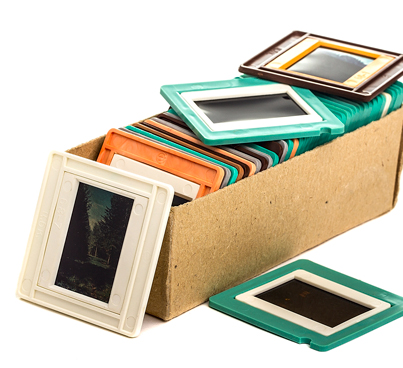
Slides To Digital for Dummies
This implies it needs to be much better matched for the ES-1 (without extra extension). If scanning these old slides is your only objective, and assuming you currently have the DSLR, and can discover an extension tube for DX, you may compare the macro how to transfer slides to digital format lens cost with a film scanner. The lens is not a movie scanner of course, and a digital camera will NOT be suitable to copy color unfavorable film, however it works for slides.
The Nikon 60 mm macro lens is exceptional for any close-up work, and I 'd assume the other comparable lenses are great too. I predict the macro would quickly become your favorite lens. This ES-1 setup works effectively for scanning mounted slides rapidly - like magic after you get the hang of it.

The macro lens optical quality is remarkable, but the other elements are maybe not transfer photos from slides to digital really maximum (rush, installing, framing, etc), not the like a genuine film scanner. But still rather easy, and which appears more than good enough for this purpose to regain countless old slides for nostalgic purposes.
Transfer Slides Into Digital Format for Beginners
Honestly, due to the months of work that would be required on a film scanner, this job went years without happening at all. Above is a sample image copied from a 1990 35 mm Kodachrome slide, using the ES-1 setup with the D 70S, 6 megapixels (is a cropped 1.5 x body).
The image is considerably larger than your display screen, and to see full size, you may have to save the bigger image and view with an image editor, or you might shut off Automatic Image Resizing in your web browser. The cam macro lens seems the apparent bet for exceptional optical quality. :-RRB- Outcomes are clearly great enough. And did I discuss it is very fast? Evaluating extremes possibly, but here is the exact same slide copied with a Canon A 620 Power Shot compact camera (point & shoot) in its macro mode. No additional attachment was utilized - its macro mode gets this close if zoomed to wide-angle.
Pixel measurements https://www.storeboard.com/blogs/general/10-quick-tips-about-transferring-slides-to-digital/1369670 are approximately equivalent to scanning at 2500 dpi. This was a rapidly kludged setup for the one image here. (My approach: keep piling on things to resolve the next instant issue). The electronic camera was on a tripod. The slide was literally standing up on edge on top of a light stand pole, held with a piece of tape.
4 Simple Techniques For Transfer Slides Into Digital Format
This light was a 150 watt household incandescent light (possibly 2900K?) in a 10 inch clamp-on energy reflector on a light stand (about 15 inches from slide), through a plastic Tupperware tray (yet another light stand) covered with a white bed sheet to diffuse it adequately (this lighted location needs to be a couple of feet wide, the slide at 1/2 inch is a wide angle scenario).
The JPG was a little blue, and was adjusted here with -Blue and +Red. Car exposure was ISO 100 and 1/80 2nd (dead time shutter to let camera stop shaking). This camera http://query.nytimes.com/search/sitesearch/?action=click&contentCollection®ion=TopBar&WT.nav=searchWidget&module=SearchSubmit&pgtype=Homepage#/slides to digital takes 4:3 photos, but the slide was 3:2, so completions are cropped. Or, a little more range would have made the image smaller so it would all fit, and then it could have been cropped to 3:2.
A straight edge held to the leading railing on the right reveals a comparable bow, which is noticeable. Substantial vignetting (dark corners). This is a pretty extreme situation for the little compact cam lens. Not exactly sure you would really wish to try this, however it can work. I did feel the very strong requirement for a hassle-free slide holder.
The 20-Second Trick For Digitalize Slides
Compacts do not specify their macro reproduction ratio, so the calculator can not include them. Lots of other techniques of holding and brightening the slide are certainly possible. If you have a longer macro lens, you definitely require something other than the ES-1 anyhow. You simply need a diffused light behind the slide, and a video camera and macro lens in front of it.
One typical way puts a lighted white paper or foam board background a foot approximately behind the slide, with the cam and macro lens on a tripod in front. Slide holder could be a plastic pill bottle screwed to a board, with a slot cut at top to hold the slide standing up.
Cam tripod screws Digitalize Slides are an ordinary 1/4-20 UNC screw (Unified Thread Requirement, coarse thread, 1/4 inch size, 20 pitch per inch), typical in any North American hardware store. Speedlight flash is likewise great for freezing cam shake. Or, simply standing the slide on a regular lighted slide sorting tray is essentially the same thing, pointing the lens at it, rear lighted.
Fascination About Transfer Slides Into Digital Format
The holder needs to be simple and quick and steady, you do not want it to move. Here's a neat Do It Yourself idea shared by Jim Simpson in Nova Scotia Canada. The grooved mounting for slides is 3/4 inch wood knobs, and it looks extremely convenient and simple to run. Tokina 100 mm macro lens on Nikon D 7100 cam, using a white screen flashlight app (Android).
White balance is Cloudy, or Shade often (remedying private slides will vary a little). Installing the electronic http://edition.cnn.com/search/?text=slides to digital camera and the slide on the same board minimizes any possibility of video camera shake. Obviously, these do need to be installed at the proper distance so that the slide fills your frame at your typical 1:1 or 1:1.5 focus distance.

